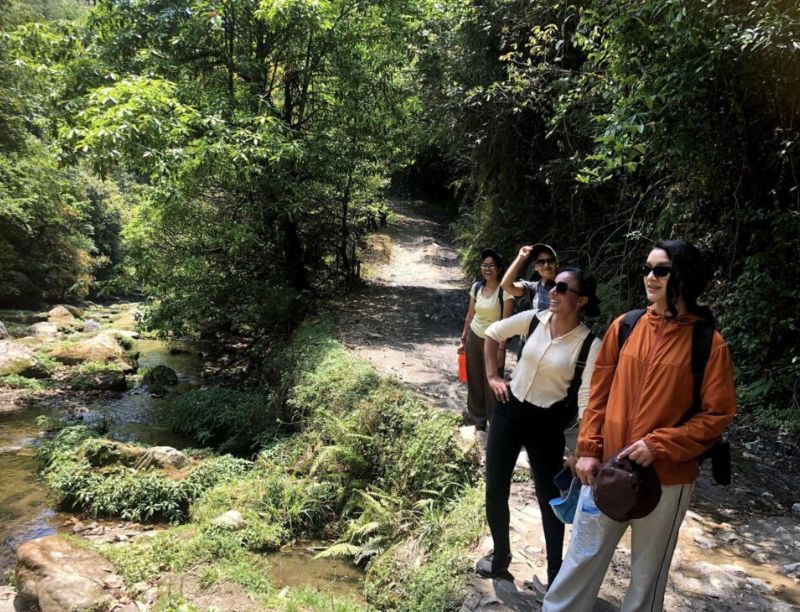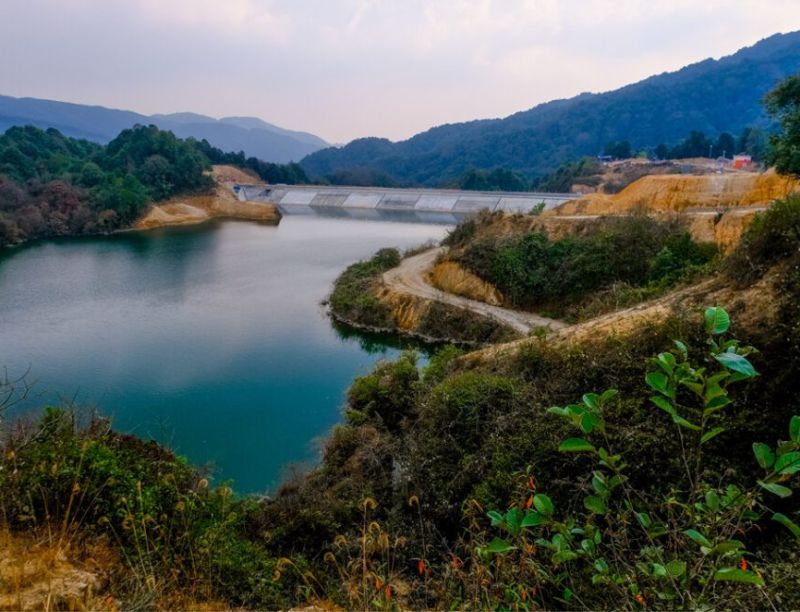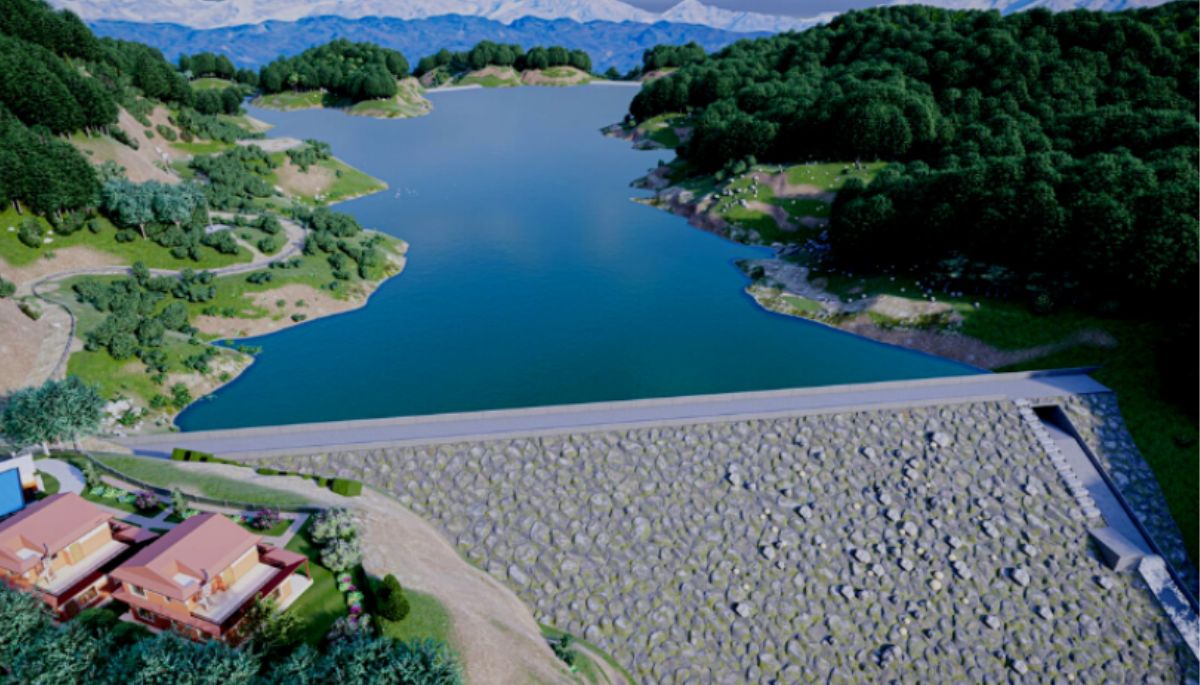Introduction
Nepal, known for its stunning scenery and dynamic culture, offers numerous trekking and hiking trails that cater to adventurers of all levels. Among these, the Dhap Dam hike from Kathmandu stands out as a precious diamond that offers a unique fusion of scenic beauty, cross-cultural interactions, and a feeling of tranquility that is often hard to find. This article will explore the main route of this hike, which begins from Sundarijal, passes through Mulkharka, and culminates at the serene Dhap Dam.
Dhap Dam is an artificial reservoir within the Shivapuri Nagarjun National Park, a few hours away from Kathmandu. The hike to Dhap Dam is an ideal retreat for anybody wishing to escape the metropolis’s bustle and immerse themselves in nature. Approximately 26 kilometers from Kathmandu, in the Bagmati Province of Nepal, is the remarkable Dhap Dam. This dam can hold up to 850,000 m3 of water at its maximum height of 24 m and width of 175 m. This hike is particularly popular among nature lovers, bird watchers, and those seeking a moderate trekking experience with rewarding views.

Getting Started: Sundarijal
The journey to Dhap Dam begins at Sundarijal, a small town about 15 kilometers northeast of Kathmandu. Sundarijal is easily accessible by bus or private vehicle. The area is famous for its waterfalls and lush greenery and as a starting point for various treks, including the Langtang and Helambu treks.
Highlights of Sundarijal:
- Waterfalls and Streams: The area is named after the beautiful waterfalls (“Sundari” means beautiful, and “Jal” means water in Nepali). Seeing the streams cascading and offering a refreshing start to the hike is fantastic.
- Shivapuri National Park Entrance: Sundarijal is the gateway to Shivapuri Nagarjun. The park’s animals and flora are very diverse.
For Day Hike check: dhap-dam-day-hike
The Ascent to Mulkharka
From Sundarijal, the trail ascends through dense forests and alongside water pipelines that channel water to Kathmandu. The path is well-marked but can be steep and challenging, requiring good fitness and stamina.
Key Points Along the Route:
- Hydropower Station: Early in the hike, you will pass by the Sundarijal Hydropower Station, an exciting landmark highlighting the area’s use of natural resources.
- Stone Steps: The trail features a series of stone steps that can be quite taxing, but they are surrounded by stunning forested areas that provide shade and coolness.
- Small Villages: Along the way, you will encounter small settlements where you can take a break, interact with locals, and enjoy the rural lifestyle.
Reaching Mulkharka
Mulkharka is a traditional Tamang village situated at an elevation of about 1800 meters. It is an excellent resting point, offering broad perspectives of the surrounding hills and the Kathmandu Valley.
What to Expect in Mulkharka:
- Local Culture: Mulkharka is predominantly inhabited by the Tamang community. Here, you can observe traditional Tamang houses and lifestyles and enjoy local hospitality.
- Tea Houses: Several tea houses and small lodges provide refreshments and simple meals. It’s a great place to refuel and relax before continuing the hike.
The Trail to Dhap Dam
From Mulkharka, the trail continues towards Dhap Dam. This hike section is more straightforward than the initial ascent, with gradual inclines and beautiful landscapes.
Trail Features:
- Forest Pathways: The route winds through dense forests filled with oak, rhododendron, and pine trees. The forest is also home to various bird species, making it a delightful experience for bird watchers.
- Scenic Views: As you progress, you will be treated to stunning vistas of the Himalayas on clear days, as well as views of terraced fields and distant villages.
- Peace and Serenity: This part of the trail is less frequented by hikers, offering a peaceful, undisturbed hiking experience.
Arriving at Dhap Dam
After several hours of hiking, you will finally reach Dhap Dam. Seeing the reservoir’s calm, clear waters against the backdrop of lush hills is genuinely mesmerizing.

Dhap Dam Highlights:
- The Reservoir: Dhap Dam was constructed to address water scarcity in Kathmandu. The reservoir has a practical purpose and has made a beautiful spot for visitors.
- Picnic Spots: The area around the dam is ideal for picnics. You can sit by the water, enjoy your packed lunch, and soak in the tranquility.
- Photography: The serene environment and the picturesque landscape make Dhap Dam an excellent place for photography enthusiasts.
Practical Information for the Hike
Here is our following Physical information for the hike:
Best Time to Hike:
- Spring (March to May): The weather is pleasant, and the rhododendrons are in full bloom.
- Autumn (September to November): Clear skies and moderate temperatures make this the best time for hiking in Nepal.
What to Pack:
- Water and Snacks: Bring plenty of water and food because there are few places to buy them along the trail.
- Comfortable Footwear: Good quality hiking boots are essential due to the rocky and uneven terrain.
- Clothing: Layered clothing is recommended, as temperatures can vary. A light jacket is helpful for the more excellent forest areas.
- First Aid Kit: Standard first aid materials are always a good idea in case of minor injuries.
Permits:
- National Park Entry Permit: Since the hike passes through Shivapuri Nagarjun National Park, you must obtain an entry permit. You can buy these at the park’s entry in Sundarijal.
Conclusion
The Dhap Dam hike from Kathmandu, following the Sundarijal-Mulkharka-Dhap Dam route, perfectly blends nature, culture, and adventure. It offers hikers a chance to experience the serene beauty of Nepal’s landscapes, interact with local communities, and enjoy a sense of peace away from the city. Whether you are an experienced hiker or a nature enthusiast looking for a moderate trek, this hike promises a memorable and rewarding experience. So pack your bags, lace up your hiking boots, and embark on this incredible journey to discover one of Nepal’s lesser-known treasures.
Also Read: The Lakuri Bhanjyang Hike from Kathmandu


0 Comment